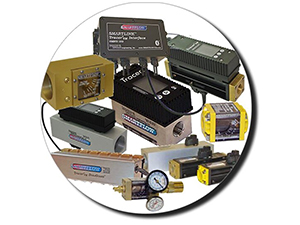
The biggest challenge of the injection molding industry is reducing cycle times. At the heart of this challenge lies the need to efficiently and safely reduce the cooling time of parts.
How can you overcome this pivotal challenge? Flowmeters. These innovative tools have emerged as game-changers in the industry, offering the ability to significantly optimize the cooling process. By precisely monitoring the flow of cooling media, flowmeters have demonstrated an ability to significantly reduce cooling times.
In industries such as automotive manufacturing, a mere 6-second reduction of cooling time by flowmeters (e.g. from 47 to 41 seconds in one example) over tens of thousands of cycles can increase production by the same percentage. Early detection of cooling circuit clogs by flowmeters can also prevent damage to parts.
The Role of Flowmeters & Flow Regulators
Flowmeters and Flow Regulators, particularly those designed for high temp injection molding, are essential in monitoring the flow of cooling media. By offering precision measurement, they provide molders with the insight needed to optimize their cooling processes effectively.
There are two primary types of flowmeters:
Mechanical Flowmeters
Ideal for those new to flow regulation, these flowmeters provide a general vision of flow and validate the concept. They play a critical role in making the cooling process repeatable and efficient, offering manufacturers key insight to their system’s flow. By starting with mechanical flowmeters, manufacturers can potentially decrease cycle times and scrap, setting the foundation for more advanced monitoring.
Electronic Flowmeters
These flowmeters offer advanced features like detecting and displaying flow and temperature. They can send signals to the press for automated monitoring, including visual or audible alarms, and can be integrated into software systems for comprehensive data logging. This level of detail, down to each circuit, is particularly valued in sectors like defense, energy and medical manufacturing, where precise tracking is key.
Identifying & Preventing Maintenance Issues
When used in conjunction with molding best practices, flowmeters contribute to maintenance management by aiding in the early detection of cooling circuit clogs. While flowmeters alone cannot detect clogs or indicate maintenance requirements, they are instrumental in providing the insight needed to identify such problems.
Sediment buildup such as calcium can greatly diminish the efficiency of mold cooling, which in turn may lead to defects like warp and sag. Through their role in a comprehensive maintenance strategy, flowmeters assist manufacturers in mitigating the risk of costly downtime and quality issues. For example, just 0.058” of calcium buildup is equivalent to an additional inch of stainless steel, reducing heat dissipation that cause defects, and increase cycle time.
The Financial Return of Investing in Flowmeters
While the initial investment in flowmeters can be significant, the ROI is very favorable when compared to the number product defects produced by inconsistent cooling in an injection mold. Injection molders invest considerably in equipment like presses, molds, and temperature control units, often amounting to over a million dollars. Investing in flowmeters is a cost-effective and efficient way to protect the productivity and integrity of your equipment.
Comprehensive Services & Injection Molding Accessories
The Plastixs team understands how precise flow measurement and regulation impacts the efficiency and quality of injection molding. Our commitment to enhancing your operations extends far beyond providing state-of-the-art flowmeters and flow regulators.
We offer a holistic range of services and products designed to optimize your injection molding processes, including custom manifold assemblies, HiTemp products, SMARTFLOW products, expert advice, superior customer service and more.
Speak with a Plastixs team member today if you’re ready to increase your injection molding cycle times and product quality.
